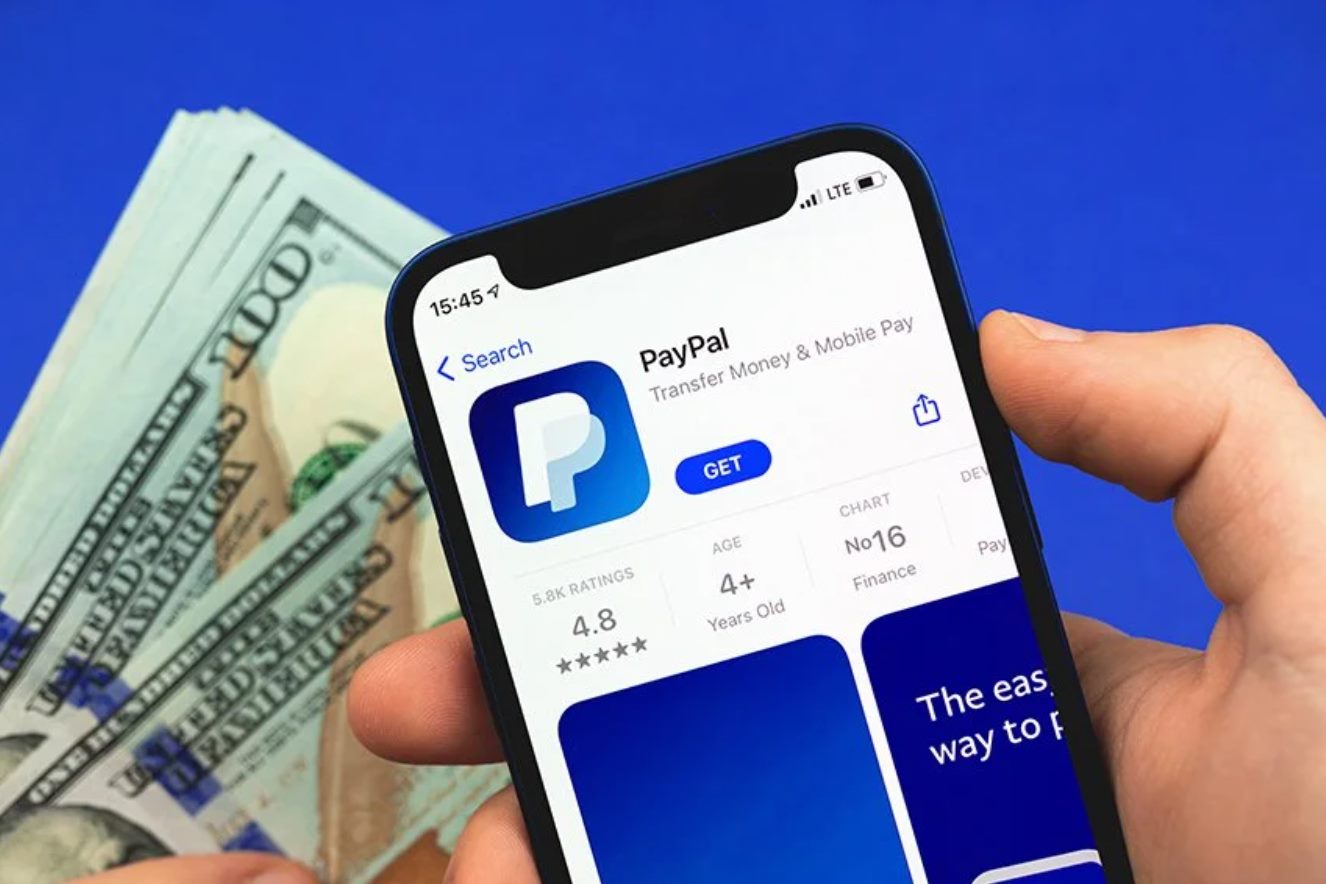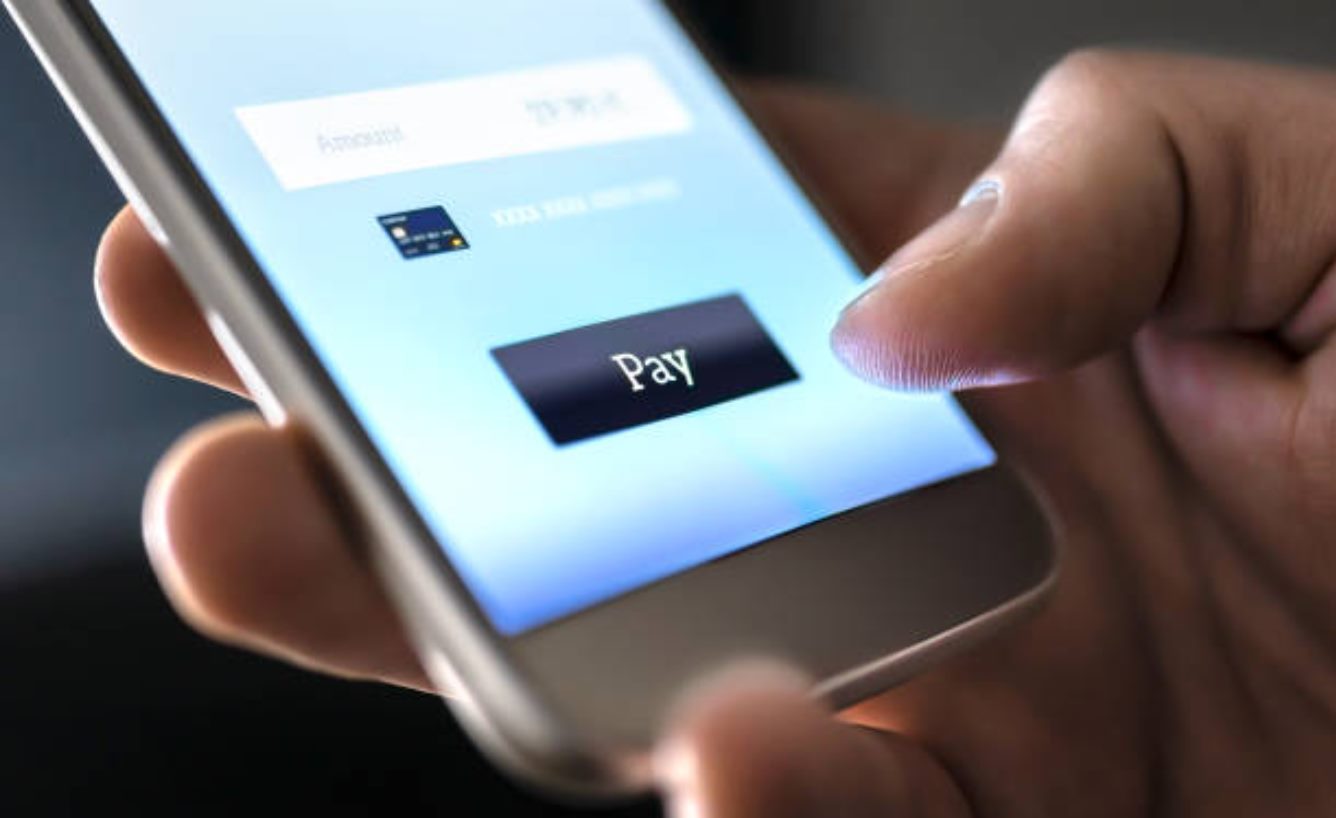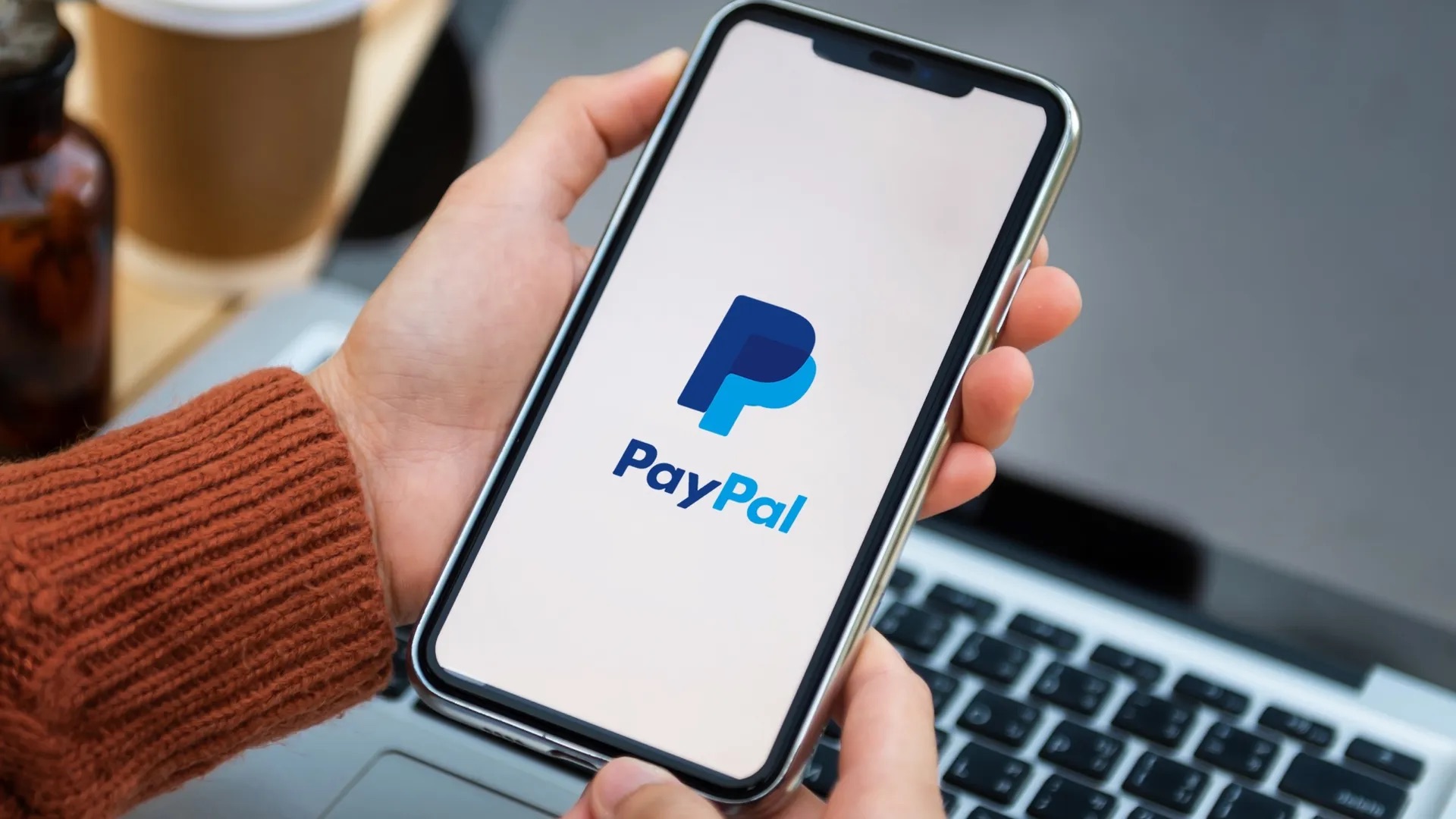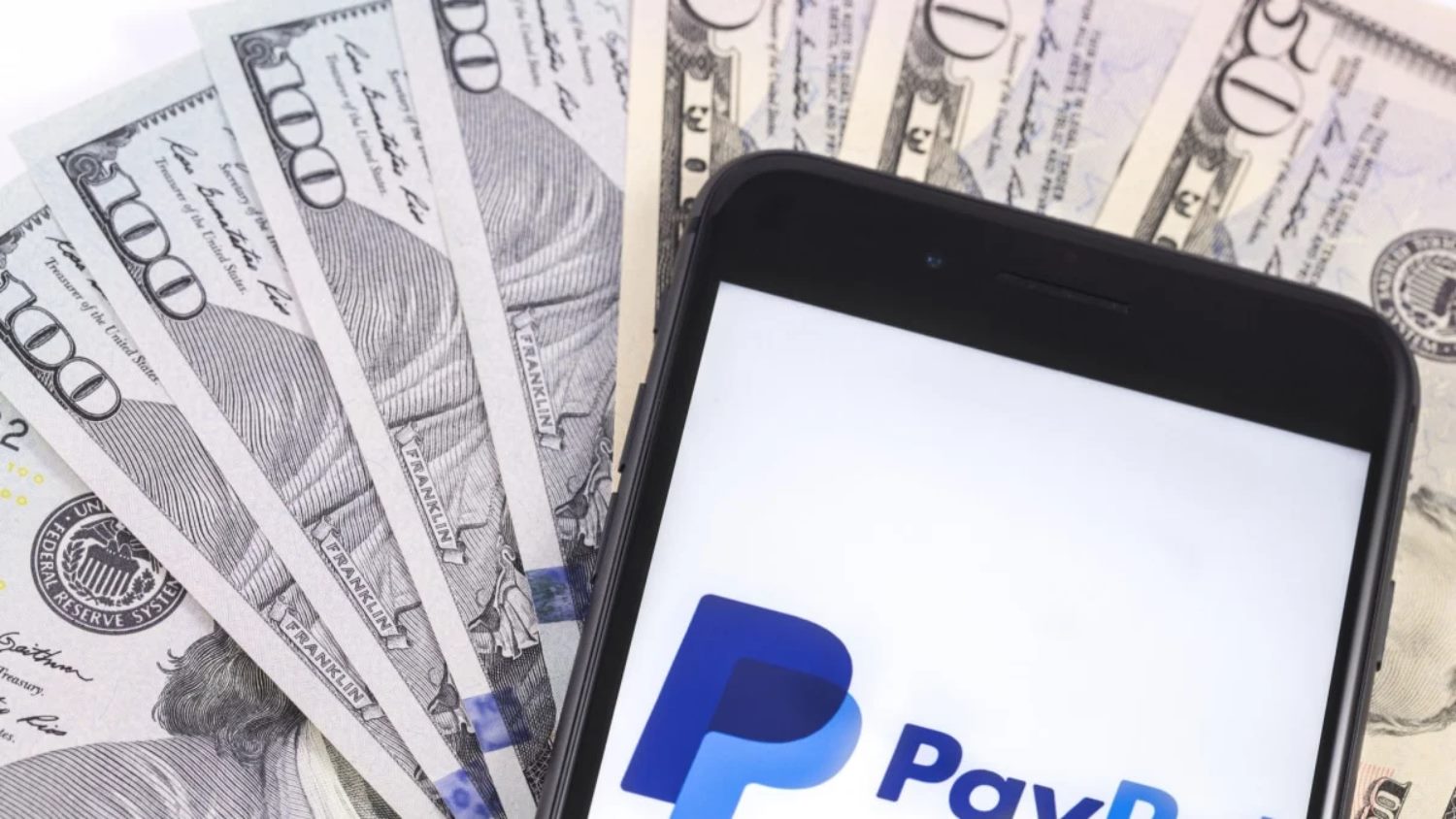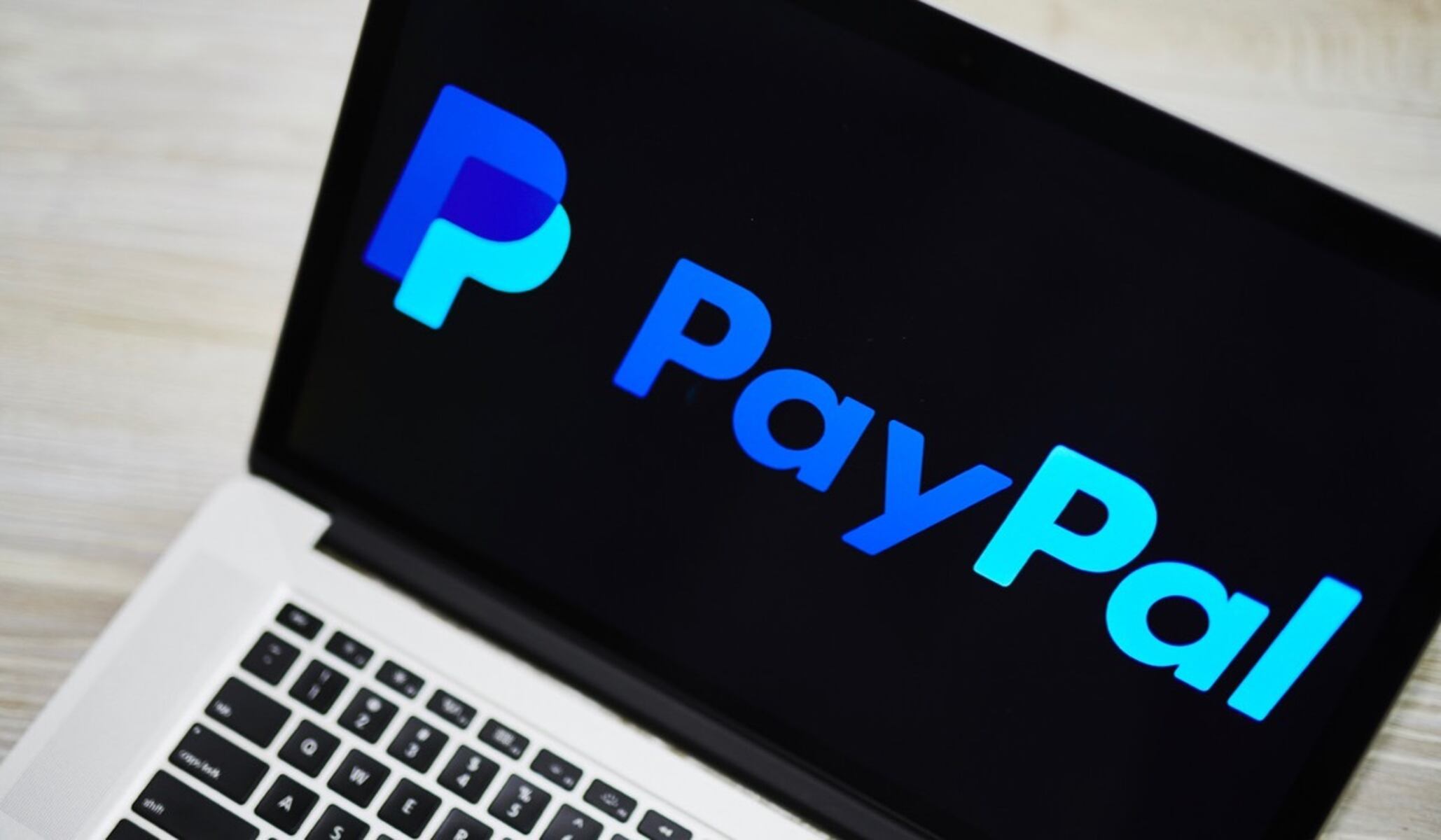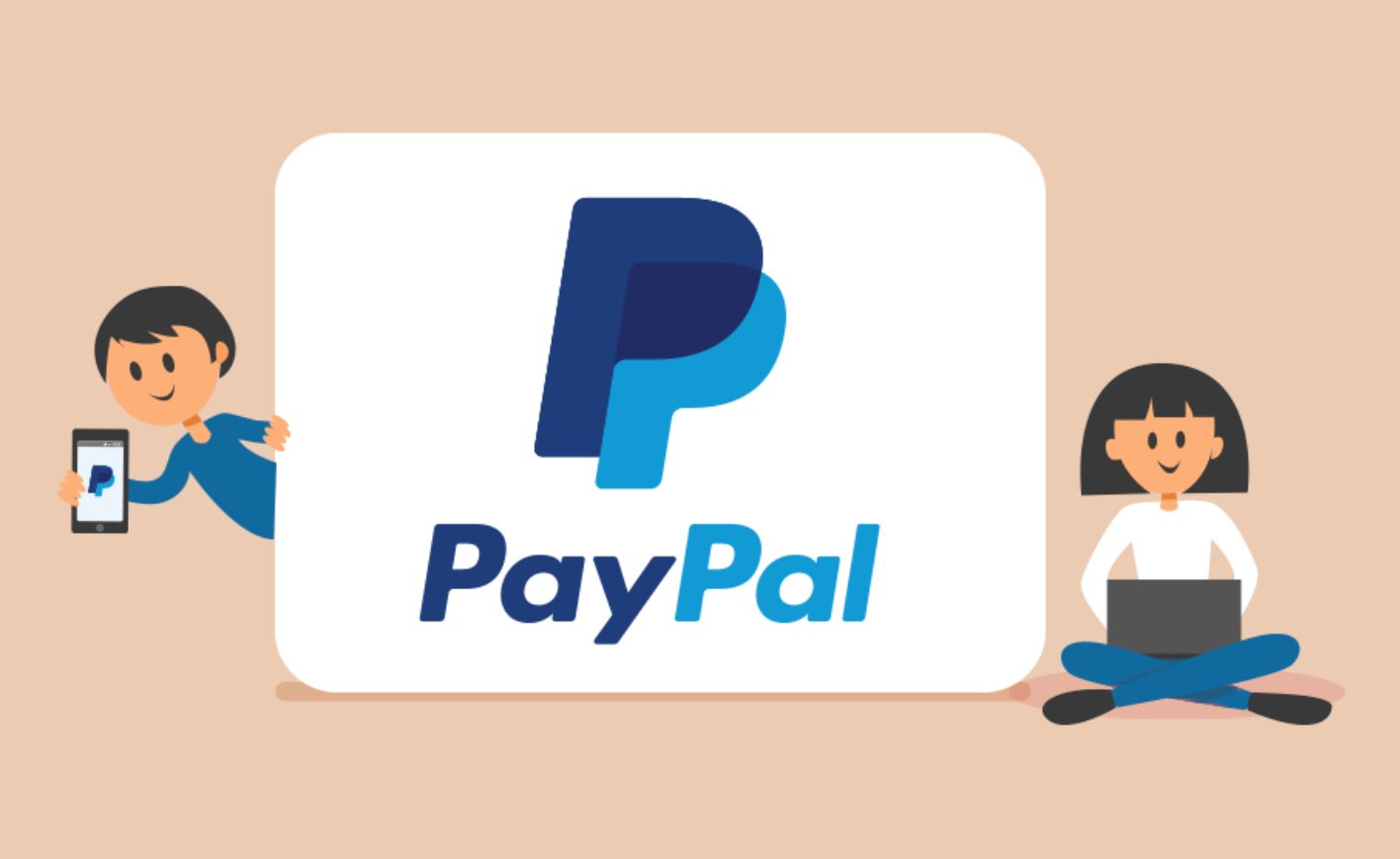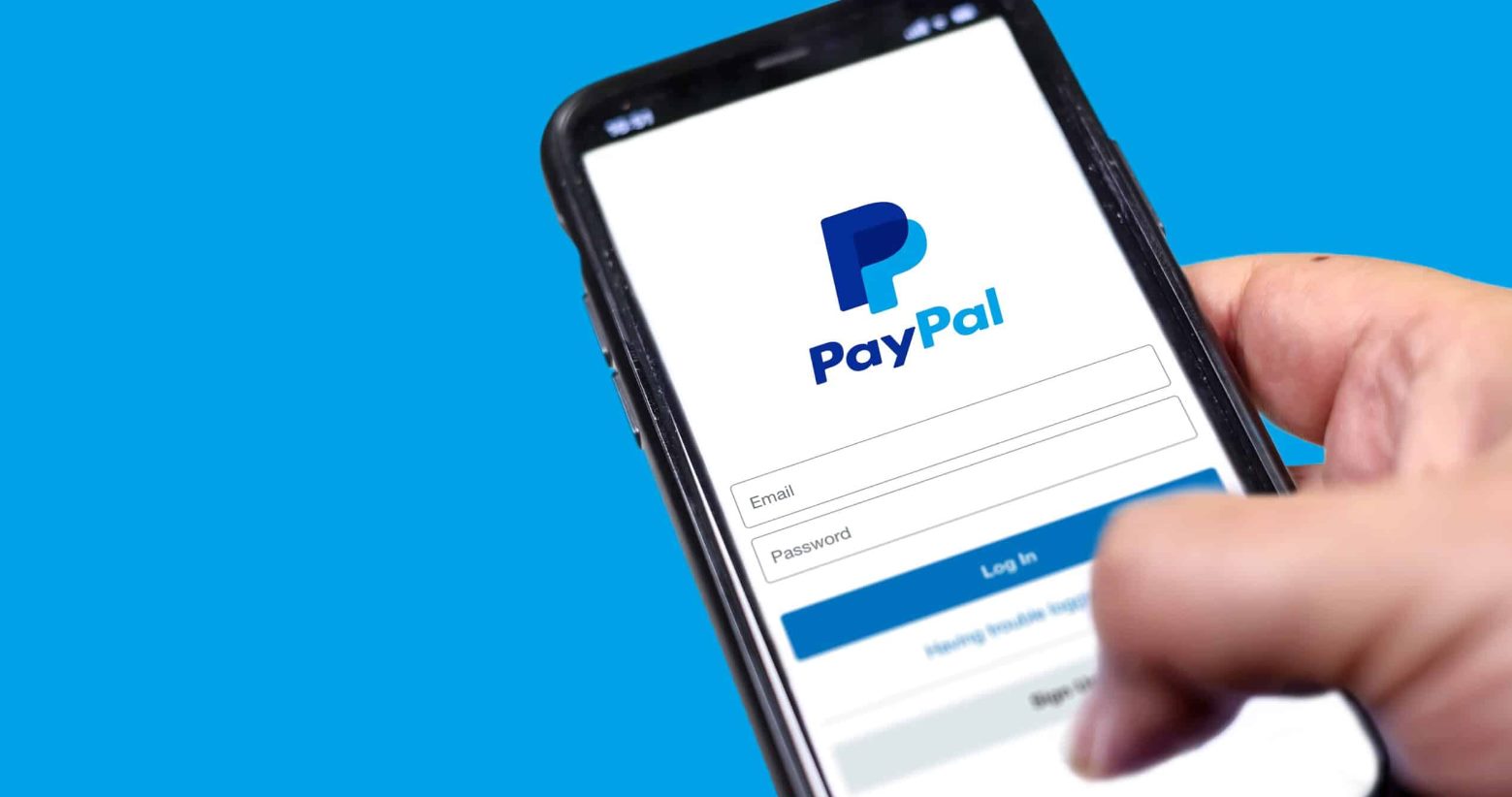Introduction
Welcome to PayPal: Where Is My Money? In this article, we will explore the common issue of missing funds in PayPal transactions and provide you with some helpful tips and steps to resolve the problem. PayPal revolutionized the way we handle online payments, providing a fast, convenient, and secure platform for individuals and businesses worldwide. However, sometimes, money may go missing, leaving users frustrated and uncertain about the next steps to take.
Whether you are a buyer expecting a refund, a seller seeking payment for your products or services, or simply trying to understand why your funds seem to have disappeared, this article aims to shed light on the matter. We will outline the process of how PayPal works, discuss common issues that can arise, and provide you with guidance on how to retrieve missing funds. Additionally, we will provide tips to help you avoid future missing payments and inform you on how to contact PayPal’s customer support for further assistance.
It is essential to note that PayPal is a widely trusted payment gateway used by millions of people daily. While occasional discrepancies in transactions may occur, it is generally a reliable and secure platform. However, in the unfortunate event that your funds go missing, it’s crucial to understand the potential reasons behind it and take appropriate actions to resolve the issue.
Overview of PayPal
PayPal is one of the most popular and widely used online payment platforms globally. Founded in 1998, PayPal offers a convenient and secure way to send and receive money online. It has become an integral part of e-commerce, allowing businesses and individuals to process payments, make purchases, and transfer funds with ease.
One of the key advantages of using PayPal is its simplicity. Setting up an account is quick and straightforward, requiring only basic personal information and a valid email address. Once registered, users can link their bank accounts, credit cards, or debit cards to their PayPal account to fund transactions.
With PayPal, users can make payments online without revealing their financial information to sellers. Instead of sharing card details or banking information with each transaction, PayPal acts as an intermediary, safeguarding users’ sensitive data and providing an added layer of security.
PayPal is widely accepted across various online platforms, making it convenient for online shopping, freelancing, and sending money to friends and family. Additionally, PayPal offers a range of additional features, such as PayPal Credit, which allows users to make purchases and pay over time, and PayPal.Me, a personalized link that enables others to send money directly to your PayPal account.
Another notable feature of PayPal is its buyer and seller protection policies. These policies offer an additional level of confidence for users engaging in online transactions. Buyers may be eligible for refunds or reimbursement if the purchased item is significantly different from the seller’s description or if they never receive the item at all. Similarly, sellers are protected against unauthorized payments and can benefit from dispute resolution tools.
Overall, PayPal has revolutionized the way we handle online payments, making it easier, safer, and more convenient for individuals and businesses alike. However, despite its many advantages, issues can still arise, such as missing funds in transactions, which we will discuss in the following sections.
How Does PayPal Work?
Understanding how PayPal works is essential to comprehend the potential reasons behind missing funds and troubleshoot any issues that may arise. PayPal functions as an online payment gateway that facilitates transactions between buyers and sellers, as well as peer-to-peer transfers.
When you make a payment through PayPal, the process typically involves the following steps:
- Account Creation: To start using PayPal, you need to create an account. This involves providing basic personal information and linking your preferred payment methods, such as bank accounts or credit cards, to your PayPal account.
- Paying or Receiving Funds: Once your account is set up, you can use PayPal to send money to others or receive payments from individuals or businesses. To send funds, you will need the recipient’s email address or mobile number linked to their PayPal account. When receiving payments, PayPal will notify you and credit the funds to your PayPal balance, which you can then withdraw to your linked bank account.
- Security Measures: PayPal utilizes advanced security measures to protect your personal and financial information. When making a payment, your financial details are not shared with the recipient, reducing the risk of unauthorized access. Additionally, PayPal offers features like two-factor authentication and buyer and seller protection to enhance security.
- Transaction Fees: PayPal charges transaction fees for certain types of transactions, such as receiving payments for goods and services or currency conversions. It’s important to review PayPal’s fee structure to understand the costs associated with your transactions.
- Integration with Online Platforms: PayPal is widely integrated with various online platforms, including e-commerce websites, freelancing platforms, and crowdfunding sites. This allows users to make payments or receive funds seamlessly within these platforms.
Overall, PayPal simplifies the process of making online payments and offers a secure and reliable platform for transacting. However, with any financial service, issues can occur, leading to missing funds or other discrepancies. In the next section, we will explore some common issues that may result in missing money and provide guidance on resolving them.
Common Issues with PayPal Transactions
While PayPal strives to provide a seamless payment experience, there are several common issues that users may encounter, resulting in missing funds or other transactional discrepancies. It’s important to understand these issues to identify the potential causes and take appropriate steps to resolve them. Here are some common problems with PayPal transactions:
- Payment Holds: PayPal may place a hold on funds for various reasons, such as security concerns or a new account. These holds can temporarily delay the availability of funds, leading to confusion and seemingly missing money. Often, the hold is released once the transaction is marked as completed or when buyer/seller satisfaction is confirmed.
- Incorrect Email Address: If you send money to the wrong email address or the recipient’s PayPal account is not linked to that email, funds can appear as missing. It’s essential to ensure that you have entered the correct email address and verify with the recipient if necessary.
- Unauthorized Transactions: In some cases, unauthorized transactions may occur on your PayPal account, leading to missing funds. It’s crucial to monitor your account activity regularly and report any suspicious transactions to PayPal immediately.
- Transaction Disputes: Disputes between buyers and sellers can sometimes result in missing funds. If a buyer raises a dispute or files a claim against a transaction, PayPal may place a hold on the funds until the dispute is resolved. This can cause confusion and give the impression of missing money.
- Technical Glitches: Occasionally, technical issues can occur within the PayPal system, resulting in missing funds or delayed transactions. It’s advisable to check the PayPal system status or contact customer support if you suspect a technical glitch.
It’s important to note that these issues are not exclusive to PayPal and can occur with any online payment platform. However, PayPal provides various tools and resources to resolve these problems efficiently. In the next section, we will discuss the potential reasons behind missing funds in PayPal transactions and provide steps you can take to retrieve your money.
Reasons Why Your Money Might Be Missing
Missing funds in PayPal transactions can be concerning and frustrating. However, there are several reasons why your money might appear to be missing. Understanding these reasons can help you pinpoint the issue and take the necessary steps to resolve it. Here are some potential reasons why your money might be missing:
- Pending Payments: If you recently made a payment or received a payment, it may be pending. PayPal holds certain transactions for a period to ensure security and prevent fraud. Check your account to see if the funds are marked as pending. Once the transaction is completed or verified, the funds will be available.
- Incorrect Account Information: Double-check the account information you provided for the transaction. Make sure the email address or mobile number associated with the recipient’s PayPal account is accurate. Sending money to the wrong account can result in missing funds.
- Transaction Disputes: If there is a dispute or claim filed against a transaction, PayPal may place a hold on the funds until the issue is resolved. This can give the appearance of missing money but is part of PayPal’s resolution process to protect buyers and sellers.
- Refunds: If you requested a refund or returned an item, the refunded amount may take some time to process. Refunds usually go back to the original payment method used, but it may take a few business days for the funds to appear in your account.
- Bank Transfer Delays: If you withdrew funds from your PayPal account and transferred them to your bank account, there can be delays in the transfer process. Depending on your bank, it may take a few business days for the funds to appear in your bank account.
- Account Limitations: In certain cases, PayPal may limit your account’s functionality or suspend it temporarily due to security concerns or violations of their terms of service. This can result in restricted access to funds and give the impression of missing money. Contact PayPal customer support for assistance in resolving account limitations.
While these reasons can explain the apparent missing funds, it’s vital to carefully review your account transactions and confirm that no unauthorized activity has taken place. If you have ruled out these potential causes and still cannot locate your money, it is essential to take specific steps to retrieve the funds, which we will discuss in the next section.
Steps to Take for Retrieving Missing Funds
Discovering missing funds in your PayPal account can be a frustrating experience. However, there are several steps you can take to retrieve your money and resolve the issue. Follow these recommended actions to increase your chances of recovering missing funds:
- Review Account Activity: Carefully review your PayPal account activity to ensure that there are no unauthorized transactions or unfamiliar charges. If you notice any suspicious activity, report it to PayPal immediately.
- Contact the Recipient: If you sent money to the wrong email address or mobile number, reach out to the recipient to discuss the issue. They may be able to assist in returning the funds or provide information on how to resolve the situation.
- Open a Dispute: If you believe a transaction was unauthorized or there is an issue with a purchase, you can open a dispute through PayPal’s Resolution Center. This will initiate a formal investigation and mediation process to help resolve the issue and potentially recover your missing funds.
- Reach Out to Customer Support: If you are unable to resolve the issue on your own, contact PayPal customer support for assistance. They have dedicated teams trained to handle missing funds and can guide you through the necessary steps to recover your money.
- Provide Documentation: When communicating with PayPal support, provide any relevant documentation or evidence related to the missing funds. This can include transaction details, receipts, emails, or any other information that can help them investigate and resolve the issue more effectively.
- Follow Up Regularly: After reporting the missing funds, stay in touch with PayPal’s customer support team. Follow up on your case regularly to ensure that it is being actively investigated and that progress is being made towards resolving the issue.
Remember to be patient throughout the process, as resolving missing funds cases may take some time. PayPal’s customer support is designed to handle these situations, and they will work diligently to assist you in retrieving your money. In the next section, we will provide some tips and recommendations to help you avoid encountering missing payment issues in the future.
Tips for Avoiding Future Missing Payments
While encountering missing funds in PayPal transactions can be frustrating, there are steps you can take to minimize the chances of this happening in the future. By following these tips, you can help ensure that your payments are processed smoothly and securely:
- Verify Recipient Information: Before sending any payment, double-check the recipient’s email address or mobile number linked to their PayPal account. Confirming the details will reduce the risk of sending money to the wrong account.
- Use Secure Devices and Networks: When accessing your PayPal account, make sure to use secure devices and networks. Avoid conducting transactions on public Wi-Fi networks or untrusted devices that may compromise your personal information.
- Regularly Update Account Information: Keep your PayPal account information up to date, including your email address and phone number. This will help ensure that you receive important notifications and account-related information.
- Enable Security Measures: Take advantage of PayPal’s security features, such as two-factor authentication, to add an extra layer of protection to your account. This will help prevent unauthorized access and potential missing payment issues.
- Keep Track of Transactions: Maintain records of your PayPal transactions, including receipts, emails, and any relevant communication. This documentation can be valuable in case you need to dispute a transaction or report missing funds.
- Regularly Check Account Activity: Monitor your PayPal account regularly for any unauthorized activity or unfamiliar transactions. If you notice any discrepancies, report them to PayPal immediately.
- Be Cautious of Phishing Attempts: Be vigilant of phishing attempts that aim to steal your PayPal login credentials or personal information. Avoid clicking on suspicious links or providing sensitive information on untrusted websites.
- Review Seller and Buyer Protection Policies: Familiarize yourself with PayPal’s buyer and seller protection policies. Knowing your rights and responsibilities as a user can help ensure a smoother resolution in case of any transactional issues.
- Stay Informed: Keep yourself updated on PayPal’s terms of service, policies, and any changes that may affect your transactions. Staying informed will help you make better decisions and understand the safeguards in place to protect your funds.
By implementing these tips, you can reduce the likelihood of missing payment issues and enhance the security and reliability of your PayPal transactions. However, if you do encounter any problems in the future, refer back to the appropriate steps mentioned earlier to resolve the issue effectively.
Contacting PayPal Customer Support
If you have exhausted all possible avenues to resolve a missing payment issue or have encountered a problem with your PayPal account, reaching out to PayPal’s customer support is the recommended next step. They have dedicated teams trained to handle various types of issues and can assist you in resolving your concerns. Here’s how to contact PayPal customer support:
- Log into your PayPal Account: Access your PayPal account using your registered email address and password.
- Visit the Help Center: Once logged in, navigate to the PayPal Help Center. You can find the Help Center by clicking on the “Help & Contact” link located at the bottom of the PayPal page.
- Search the Knowledge Base: PayPal’s Help Center offers an extensive knowledge base where you can find answers to common questions and issues. Enter relevant keywords in the search bar to browse through the articles and find solutions that match your situation.
- Contact Options: If you can’t find a solution in the knowledge base, you can contact PayPal’s customer support directly. PayPal provides several contact options, including phone support, email support, and community forums. Choose the method that suits your preference and the urgency of your situation.
- Phone Support: PayPal’s phone support is a fast and direct way to reach a customer service representative. Log in to your PayPal account, navigate to the Help Center, select the “Contact Us” option, and follow the prompts to connect with a support agent via phone.
- Email Support: If your issue is not urgent, you can send an email to PayPal’s customer support team. Access the Help Center, select the “Contact Us” option, and choose the email support method. Provide as much detail as possible about your issue to expedite the resolution process.
- Community Forums: PayPal’s community forums are a resourceful platform where users can seek guidance and advice from other community members. Engage with the community by posting your question or concern, and you may receive assistance from experienced PayPal users or PayPal staff.
When contacting PayPal customer support, make sure to provide accurate and specific information regarding your missing payment issue. Attach any relevant documentation or screenshots that can assist in the investigation. Be patient and persistent, following up regularly to ensure that your case is being actively addressed.
Remember, PayPal’s customer support is there to assist you, and they will do their best to resolve the issue and help you retrieve your missing funds.
Conclusion
In conclusion, PayPal is undoubtedly a convenient and trusted platform for online payments. However, encountering missing funds in transactions can be a frustrating experience. By understanding how PayPal works, being aware of common issues, and taking appropriate steps, you can increase your chances of retrieving missing funds and preventing future problems.
In this article, we discussed an overview of PayPal and how it functions as an online payment gateway. We explored common issues that users may face, such as payment holds, incorrect account information, transaction disputes, and technical glitches. Additionally, we provided steps to take for retrieving missing funds, including reviewing account activity, contacting the recipient, opening a dispute, and reaching out to PayPal customer support.
We also shared tips for avoiding future missing payment issues, such as verifying recipient information, using secure devices and networks, and regularly checking account activity. By implementing these tips, you can enhance the security and reliability of your PayPal transactions.
If you do encounter any issues, we emphasized the importance of reaching out to PayPal customer support. We provided instructions on how to contact them through the Help Center, including phone support, email support, and community forums. Their dedicated teams are equipped to assist you in resolving problems and retrieving missing funds.
Remember, while missing payment issues can be frustrating, PayPal is committed to supporting its users and ensuring a positive payment experience. By staying informed, following best practices, and taking prompt action, you can navigate any challenges that arise and continue to utilize PayPal’s services with confidence.







